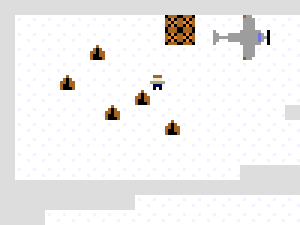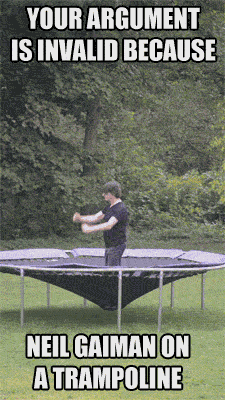Last night at my dojo, I was in a very small class. In fact, when I showed up, it looked like it was just going to be me and the instructor, though another person showed up partway through our warmups.
Most classes during regular training have us practice two, maybe three techniques in a set sort of way: this technique with this entry, resulting in this throw or pin. Ikkyo, nikyo, sankyo, yonkyo, kotegaeshi. (There are others, of course, but those five, and especially ikkyo through yonkyo, represent a sort of core for the practice.) We practice these over and over, static and in motion, in response to different attacks. We help our bodies to learn the movements so that we can do them without having to think, so that we can better defend ourselves against an attack we haven’t practiced against, should it ever become necessary off the mat.
We practice those techniques, and others, so that when we show up to a class attended by one other person and the instructor wants to have some fun, we can flow through attacks and find our way to a technique our muscles know.
One of the things that our senpai said during class last night was that, on either side of the technique, we shouldn’t enter with too many preconceived notions of what’s going to happen. If we attack, expecting a certain defense, or if we’re setting ourselves up to defend against a particular attack and our partner doesn’t do what we’re expecting, we’re going to have a bad time. That advice varies in usefulness depending on what’s being practiced, but for what we were doing, and for my practice as a writer, that struck a chord.
During rondori, defending against multiple attackers, I’ve frozen up or fumbled before when my idea of how I would defend didn’t line up with the attacks I was facing or when I’ve gotten partway into a technique and forgotten where I’m supposed to go next.
So often, when I get stuck on a story, it’s because I began with a firm idea of where it was going, and as I wrote my way in, it became clear that that wasn’t the direction the story was going anymore. It becomes very difficult, for me at least, to keep on writing when I reach a place where what I planned on having happen and what makes sense to happen don’t line up.
In both cases, practice helps, but so, too, does the advice not to hold to strongly to preconceived ideas of what will happen. Practice helps you connect with your partner’s energy. Improvisation lets you redirect that energy when your initial plan flies out the window. Without connecting, you may find yourself just planting your feet and trying to push or wrench your partner around. The energy in that feels wrong, and everyone, participant or observer, can tell.
Practice helps you get words on the page and connect to the flow and energy of the story. Improvisation lets you follow that story to its end, even if that end wasn’t the one you had in mind. Without that improvisation, you end up doing the prose equivalent of planting and pushing. You might get your story to go where you’d planned, but it’ll feel wrong, and it’ll show.
Now, in aikido, there is no drafting, no revision process in which you can go back over an attack and tweak and tug, here and there, until you execute a technique perfectly. In fact, there is no perfect, only a gradation of proficiency. (There is no perfect in writing, for that matter.) You can go back in subsequent drafts and smooth over the place where you planted your feet and forced your story to go the way you originally intended as sometimes we all must. In the moment of writing, though, I would prefer simply not to get stuck.
(If anyone figures out a good trick to actually applying the advice given above, I would love to hear from you.)
Anyhow, that’s your intermittent trying-to-relate-martial-arts-to-writing ramble.







